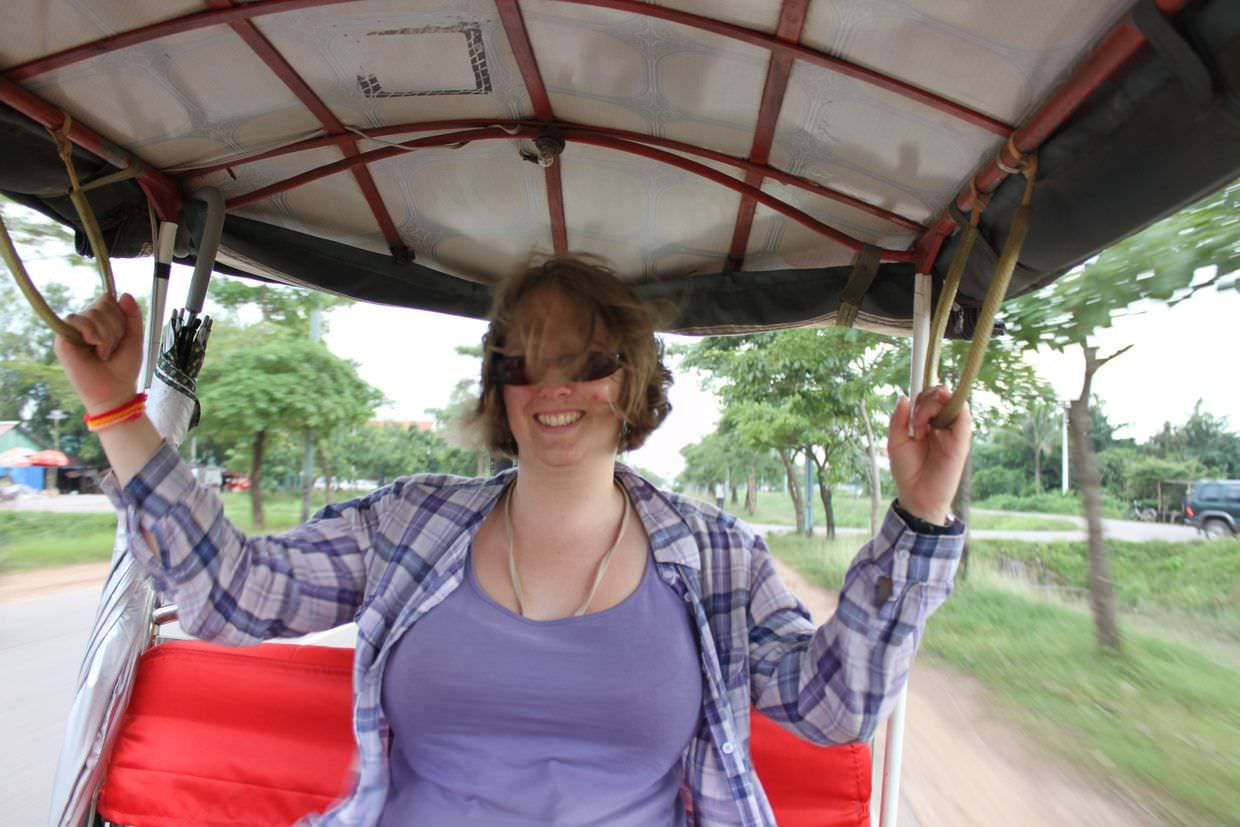Sunrise then Banteay Srei, Banteay Samré and Pre Rup temples
Sunrise at Angkor Wat
Of all the early mornings, this was the earliest. 4:30am our alarm beckoned. Vesna met us at 4:45am and we were swiftly off to Angkor Wat; because getting up so early on holiday is what we clearly enjoy doing. It was a restless night too, dreaming about the temples and constantly waking, believing we’d missed dawn.
Every morning so far had been overcast, and a little grim. But as we sped towards the park there were only ruffles of cloud amidst sparkling stars. (Yep, that early). We cruised through the dark pre-dawn morning streets of Siem Reap, where the few folks up at this time were preparing for the day ahead, as I’m sure they did everyday. On the main road to Angkor we joined a procession of tuk-tuks, a tourist parade leading straight to the Wat. A daily ritual.
We foolishly thought there might not be any hard sellers. Ha. Of course there were, only this time they were older, and selling coffee and torches. “No thank you”, we said, standing outside the entrance to Angkor Wat. Through the dark we trekked, using Sam’s wind up torch to light the path ahead, over the moat, down the main promenade and left past the library, towards the reflecting pool.
We arrived before many of the crowds, and staked a spot by the edge of the water. Our tiny gorilla tripod primed for the sunrise, manually focused on the central spire, too dark to auto focus. There was no wind, and it was a “cool” 26C, probably the most pleasant time of the day.
As the crowds grew larger, the sky grew brighter; every few seconds a flash would fire, as if the camera could light up the ancient monument. People always do that. The stronger the light, the sharper I could focus the camera, and soon the long exposures were coming out fantastic. A two second exposure quickly reduced to less than a second.
Sun rise was at 6:02am. And a slight orange haze came over the place, a morning mist blew in, and the towers were ethereal. The sun rise wasn’t spectacular, there were still too many clouds, and nothing could match what we’d seen in Halong Bay, but it was beautiful nonetheless. I enjoyed the patience necessary to get a good photo.
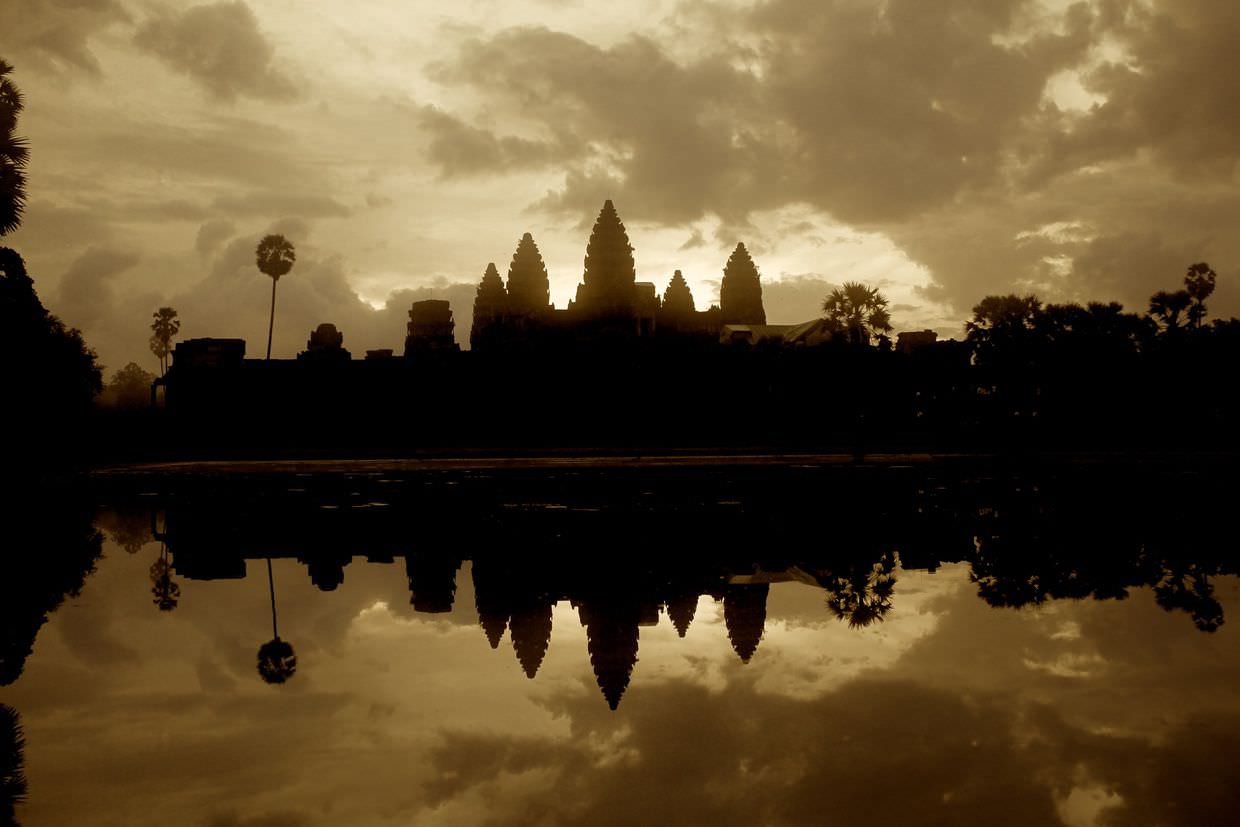
Before heading back we took two more quick stops. First to the south gate, empty for now, we played amidst the statues and took photos. Vesna yawned, he was clearly very tired, though I imagine he has to do this a lot, we were very grateful. With our picture of an empty bridge and gate, save for a solitary cyclist, we left for Bayon. I hadn’t been happy with the pictures we took a couple of days back, I knew I could do better. Once more, crazy Bayon was astounding, and this time empty. I stood in front and snapped geese preparing for their day, in front of the many towers of faces, watched from every angle. And from the corner, with Vesna’s recommendation, I captured more photos, this time with the aid of a reflection pool. I think the shots came out fantastic.

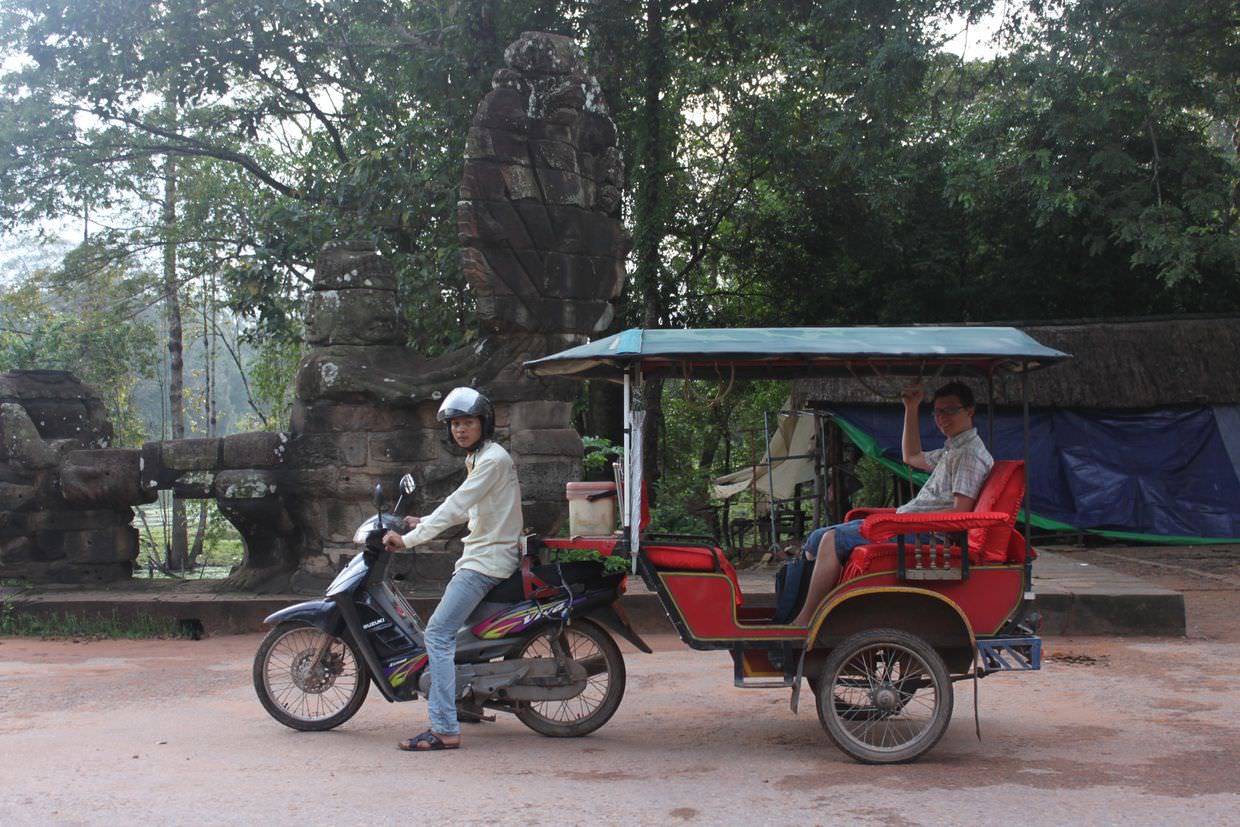
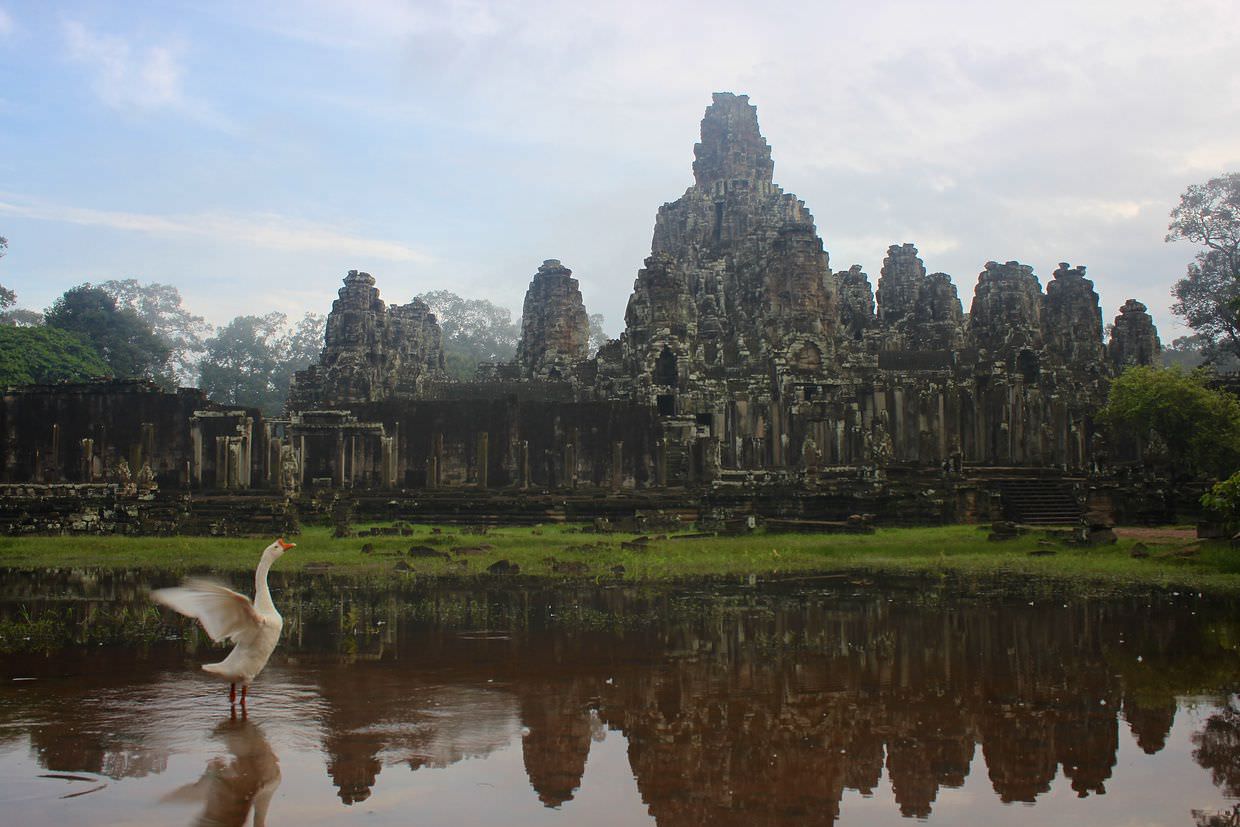
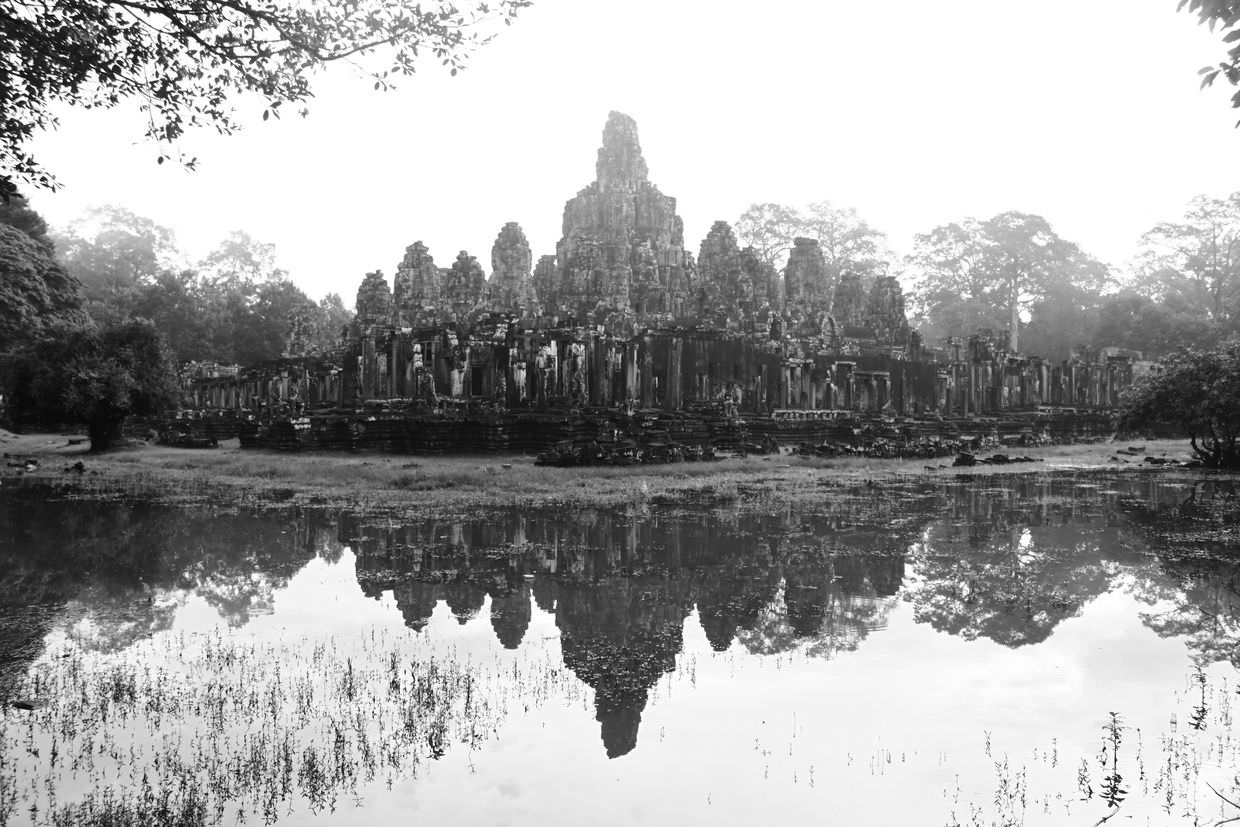
Alas, that’s enough, and all of a sudden we needed to sleep again. Back at the hotel by 7:45am, we slept for a good few hours and woke afresh, ready for the day. And we consumed a mammoth breakfast to boot.
Banteay Srei temple
Today’s temple itinerary was obvious. First stop, Banteay Srei, 40km out of town, about an hour by tuk tuk, and a journey through Cambodia’s countryside and rural roads. Rice paddies stretched out to the hills in the distance, and farmworkers stooped in them, transplanting rice which’ll be harvested later in the year.
Casually minding my own business, and rather enjoying the ride, I felt a sudden and very painful jab in my right arm. Looking down, some huge bug had attached to me, without enough time to really see it, or identify it, I brushed it off. “Ow, owww, OW OW OW. What was that? Am I poisoned? OW!”. The wound started to swell instantly, but the ice cold water bottles helped numb it. I remain in a lot of pain for the rest of the journey, Sam is talking a lot, but I’m not hearing most of her words (or fewer than usual). The pain stopped after an hour or so, and it was probably some form of wasp that stung me. I feared it might’ve been a spider.
We arrived at Banteay Srei, a modern complex, newly built and with an attached museum. The hard selling locals were more upmarket too, they had DVDs in many languages.
Before entering I was shocked and horrified by the appearance of a Cambodian girl trying to sell postcards. Probably only a teenager, she had a stifled zombie-like walk, and had suffered horrific third degree burns on her face and body, presumably from unexploded ordinance or a land mine. I’ve never seen someone scarred so irrecoverably, and seemingly without any ongoing care. She genuinely scared me, and I am appalled at my own reaction to this poor girl’s plight.
The temple is famous for its red sandstone and intricate stone carvings, they’ve survived for a thousand years, and thanks to the nature of the stone, their pristine detail is still intact. A gravel track leads to the small temple. It’s a Hindu temple, dedicated to Shiva, and the buildings are tiny. But the level of detail and intricacy in the carvings is incredible, it is the “jewel of khmer art”.
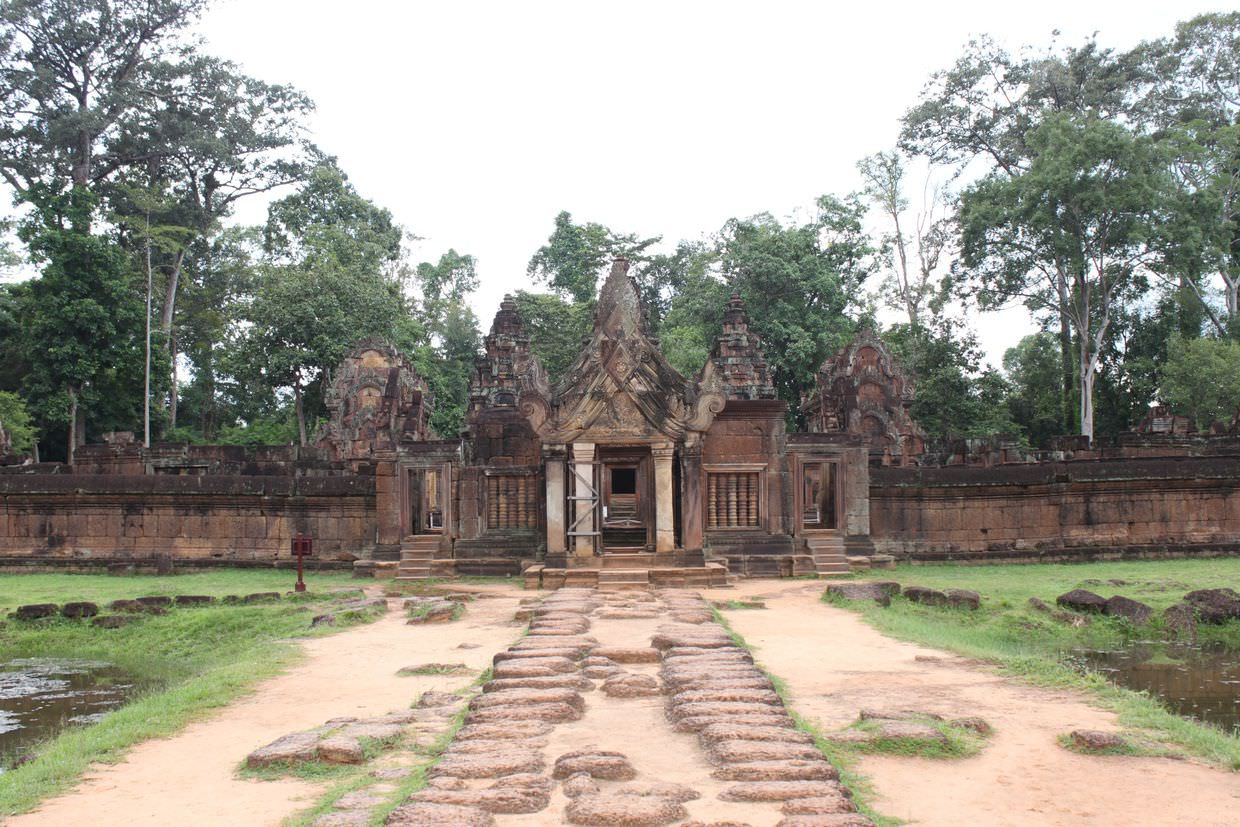
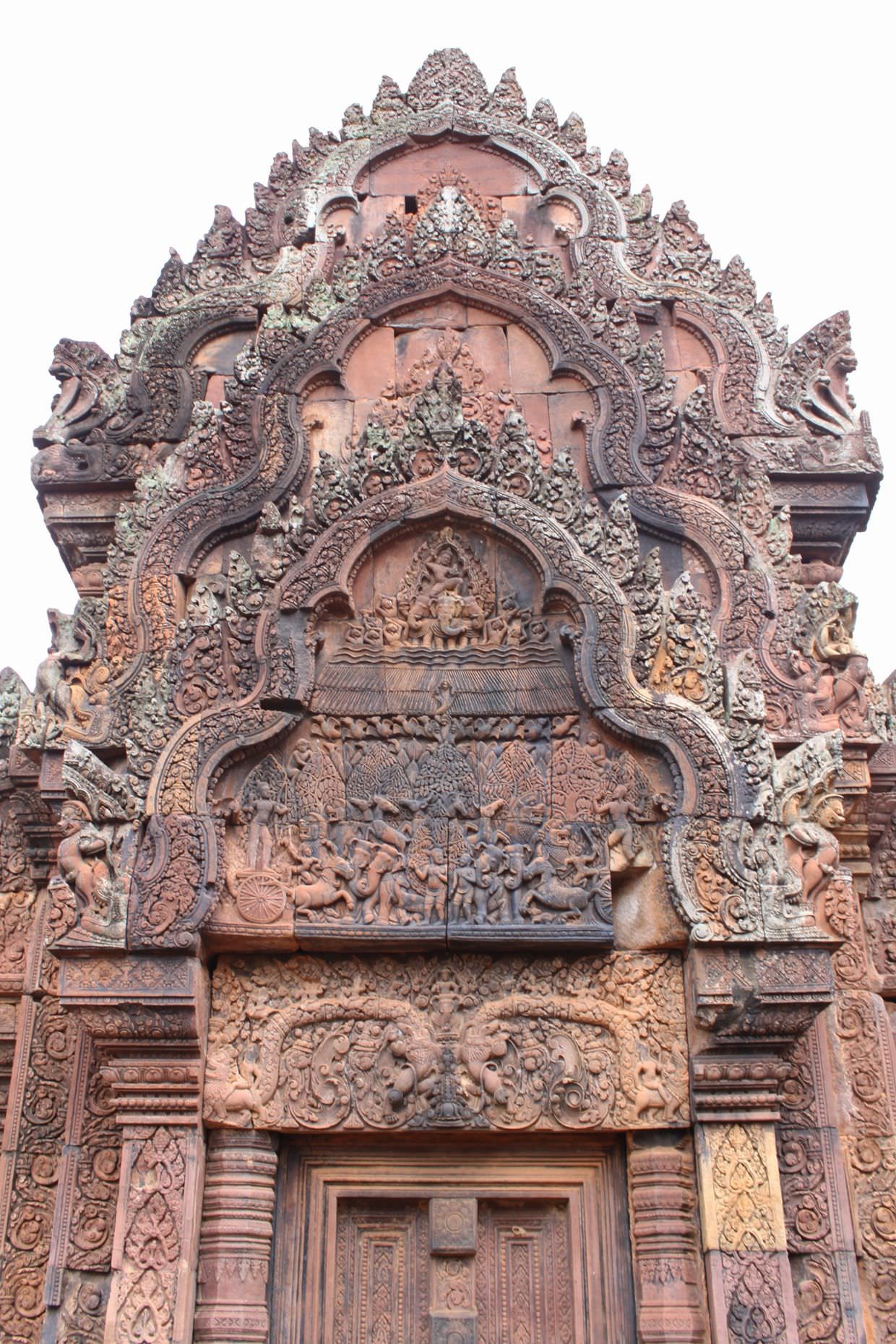
A Cambodian family explored the grounds with us; seven kids were running about, hiding amongst the ruins, jumping in the water pools, hiding from staff members.
The weathered pink sandstone occasionally opened up great crevices, perfect places for lizards to hide. In particular a beautiful foot-long blue and red spotted Tockay Gecko. It poked its head out, and then scarpered.
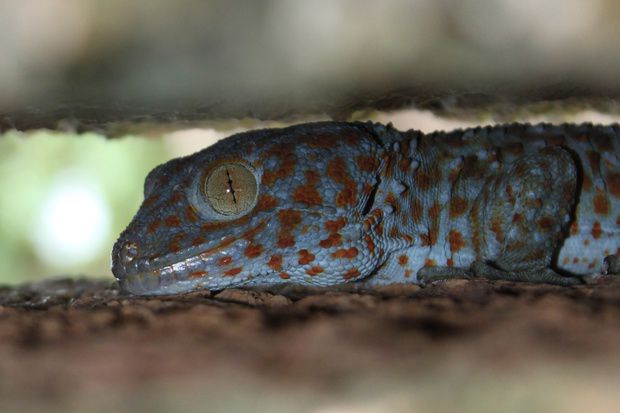
The carvings were everywhere. We admired those on top of the gopuras, following the notes in our guide book to understand the depictions. So detailed and beautiful, the more you look the more you see. We spotted the ten headed ten armed Ravana ourselves. There were demons eating people or being attacked. The burning of the Khāṇḍava Forest and many devatas, celestial dancing girls, sprinkled about the corners.

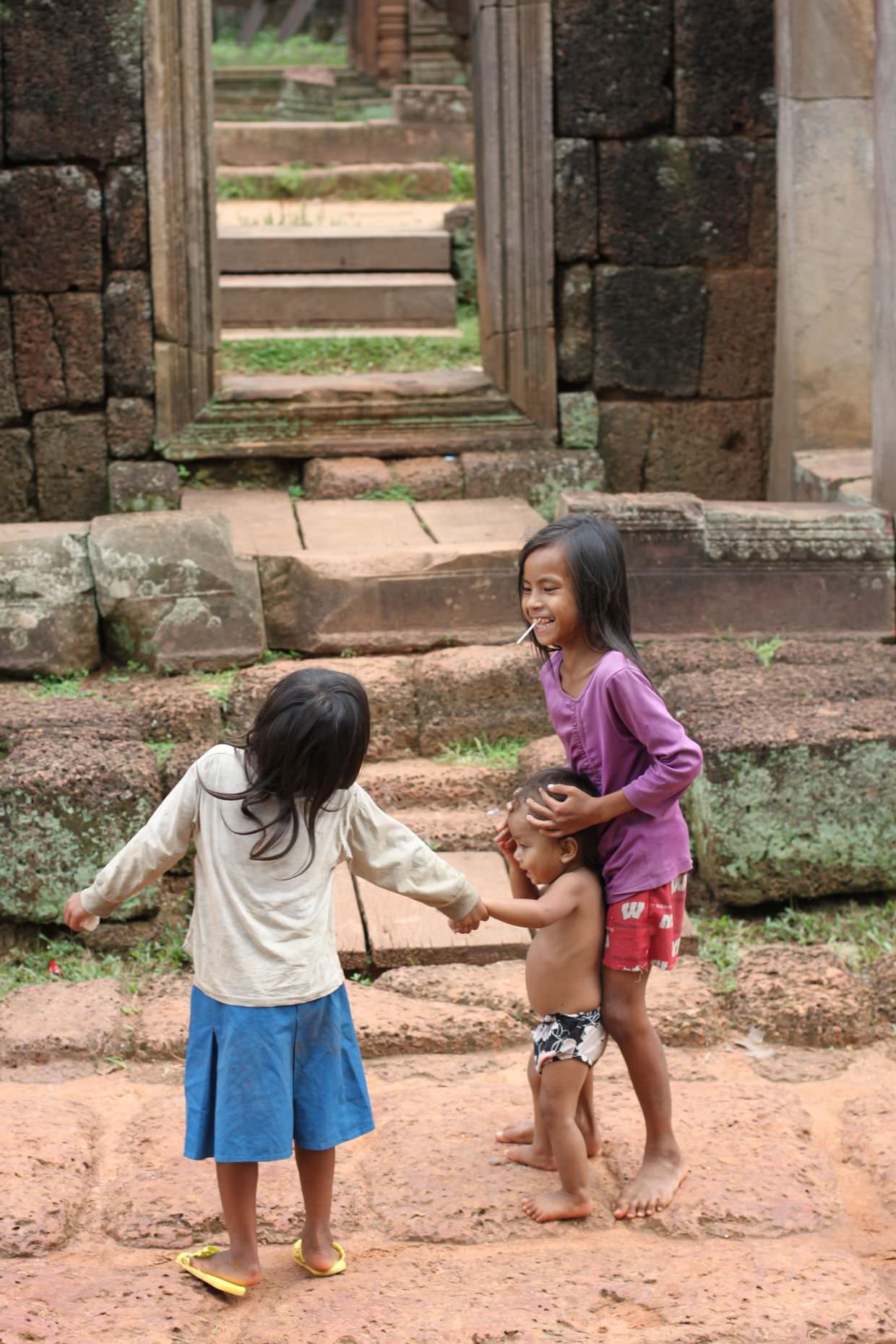
At the museum, where placards hang from the ceiling, the stories of the temple’s history are told. The discovery, the restoration, the famous attempted pilfering by André Malraux. Outside the storm rains briefly returned, and they battered down on the metal roof. The rain had such force and tenacity, pummelling the delicate lotus flowers. But it soon cleared up again.
Tuk tuk back
We headed back towards Siem Reap. Vesna suggested we shout if there was anything we wanted to see more of, or learn about. We stopped by the rice paddies, and watched the farmworkers transplanting rice, they smiled as we took photos, and waved goodbye when we left.
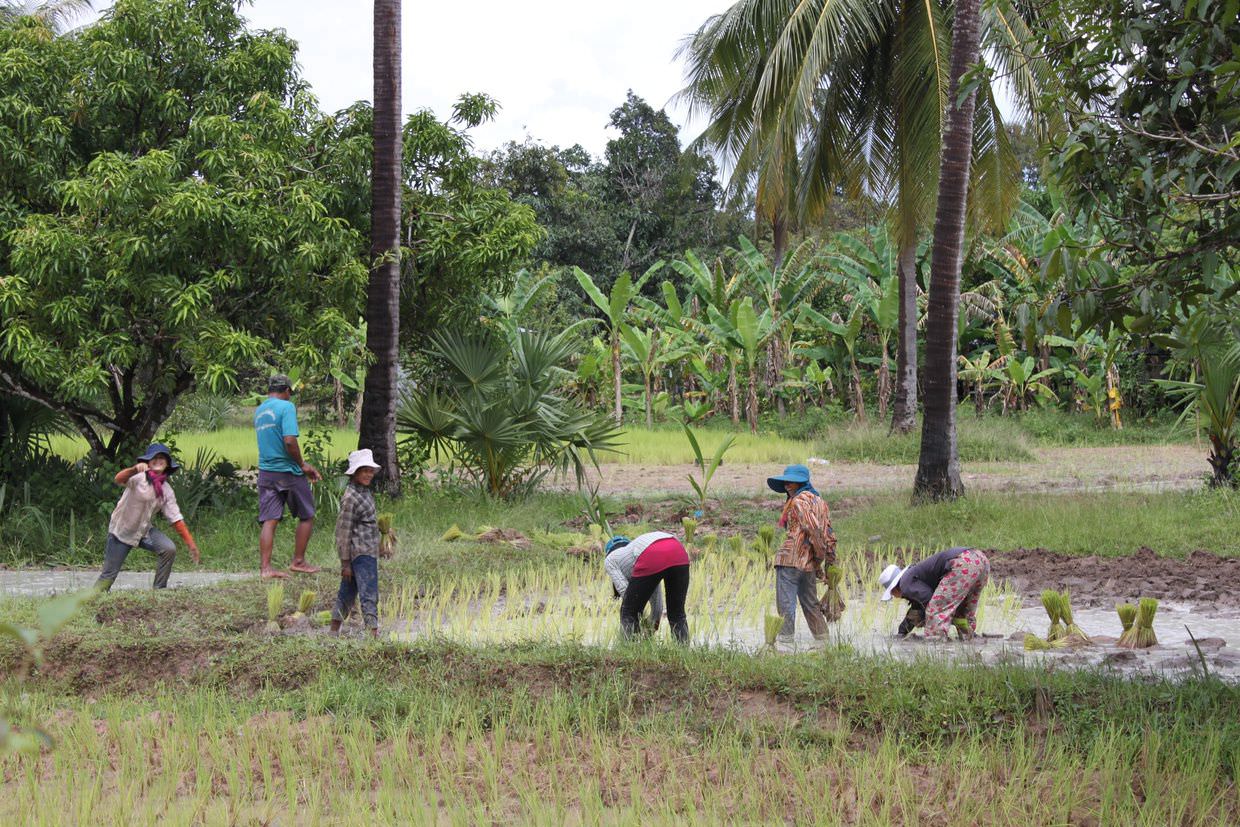
We stopped by a house that had piles of wood outside. The families farm the wood and cut it into 1m lengths. A lorry came by to pick up the stock to sell at market. The house was wooden, built on stilts, presumably to avoid flooding. Tyres lay strewn on hay rooftops, to keep them down in strong winds. Most houses were wooden, the occasional stone house belonged to a politician or important figure.
We stopped again, this time to peruse some street side vendors. They were making sweets from palm sugar they’d harvested nearby. Young girls were stirring the sugary syrup in great metal bowls. The sweets were tasty too, we bought a couple for $1, wrapped in banana leaf packaging. Sam bought a scarf and pashmina too, while I danced with a giant flying beetle I didn’t fancy being close to. Then there were the waffles, just cooked, very hot, sweetened with palm sugar; simply delicious, and possibly the best waffles we’ve ever tasted.
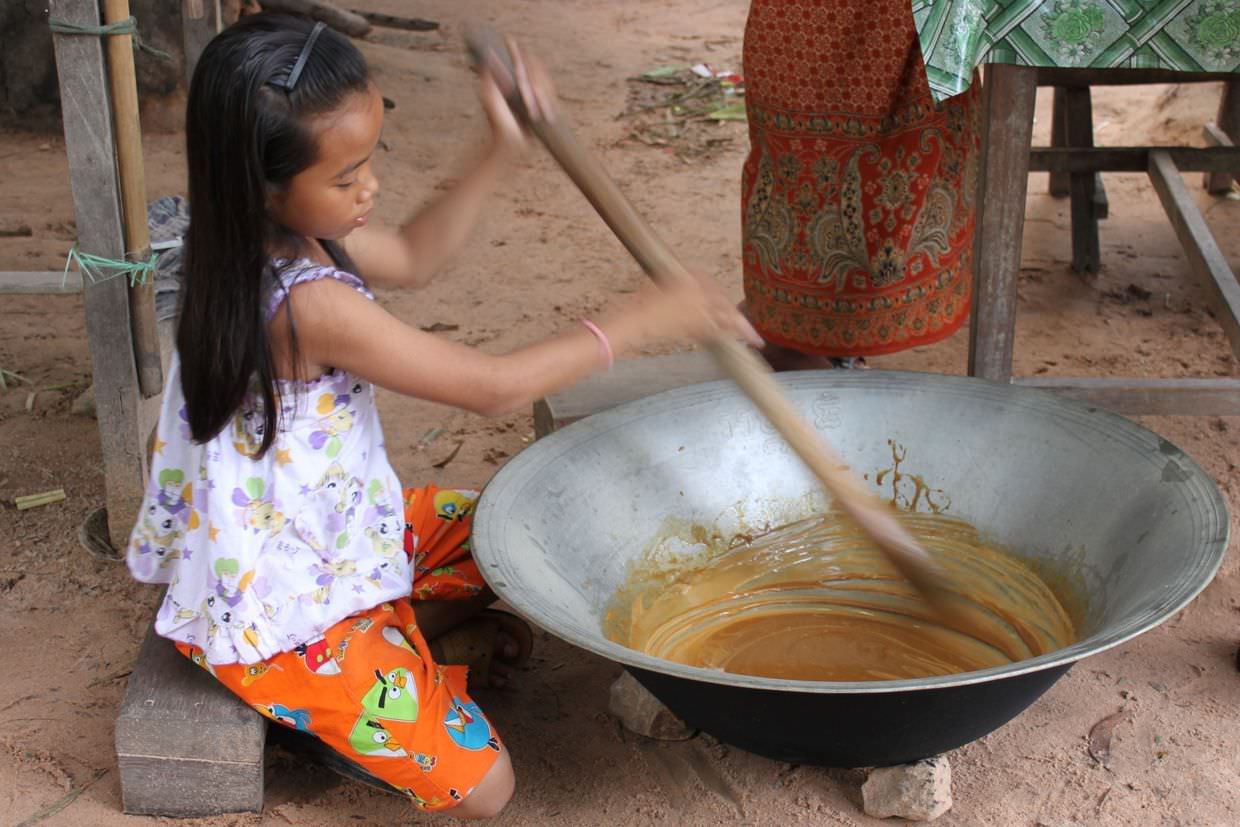
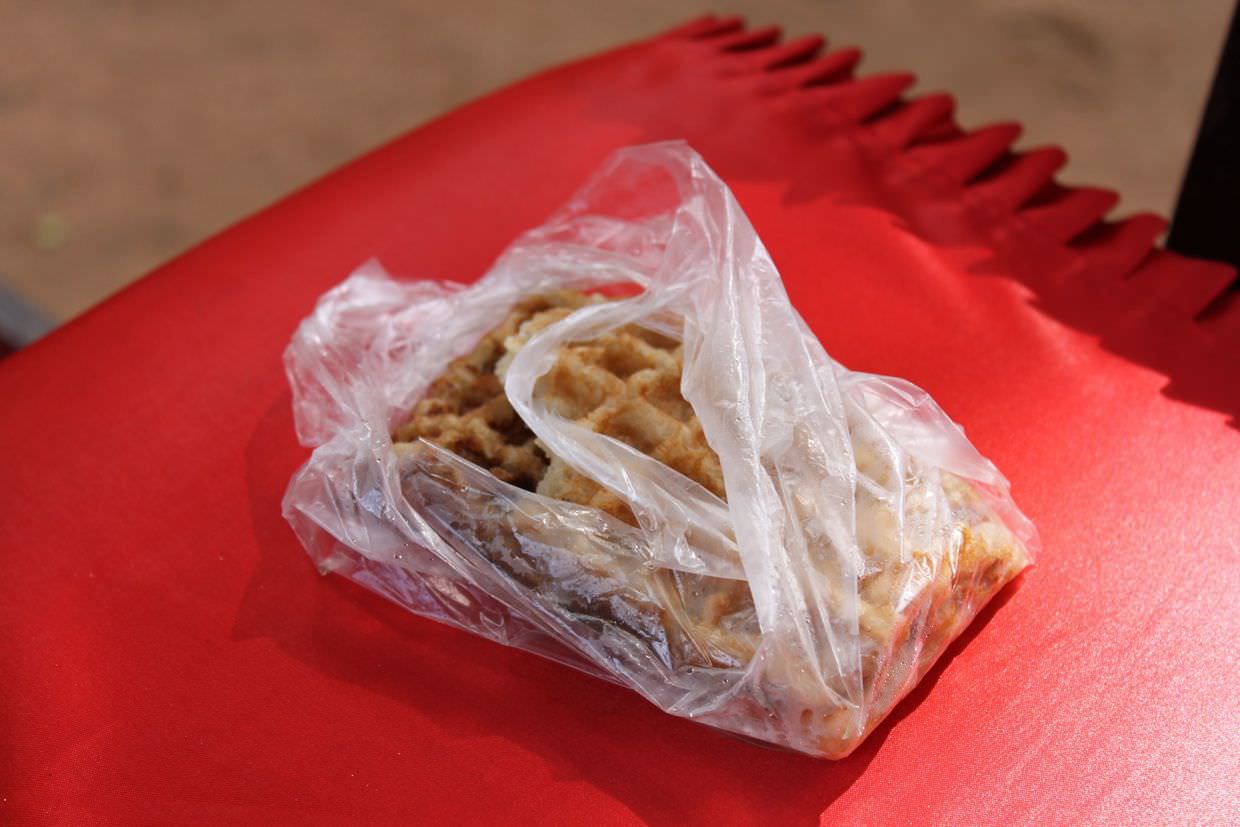
Banteay Samré temple
Next stop on the temple tour was Banteay Samré, another of Vesna’s recommendations. Girls at the entrance mobbed us, though this time they weren’t annoying; politer, friendlier, with fun quizzical questions. They were trying to seek handmade Christmas decorations. In the heat of the moment (pun intended), Sam stood too close to the tuk-tuk, rubbed her leg against the hot engine and burnt herself. Out comes the ice water once again, to numb another wound.
The temple is red sandstone again, and an early mode for Angkor, I heard a local expert explain. A walled corridor surrounds the building, surprisingly intact all the way round. It’s a flat temple, that used to have water pools, and it’s peaceful and quiet. We crossed to the solitary central plinth and tower, which houses a Buddha. Sam sat here with an elderly man who explained parts of the temple, although she only understood half of what he said. A cat slept in one of the real windows, he’s rock coloured and perfectly camouflaged. Meanwhile a cute girl is running around and playing with her family, but she has chicken pox, and I try to avoid her. Banteay Samré is a lovely place to explore; serene, quiet and sheltered.
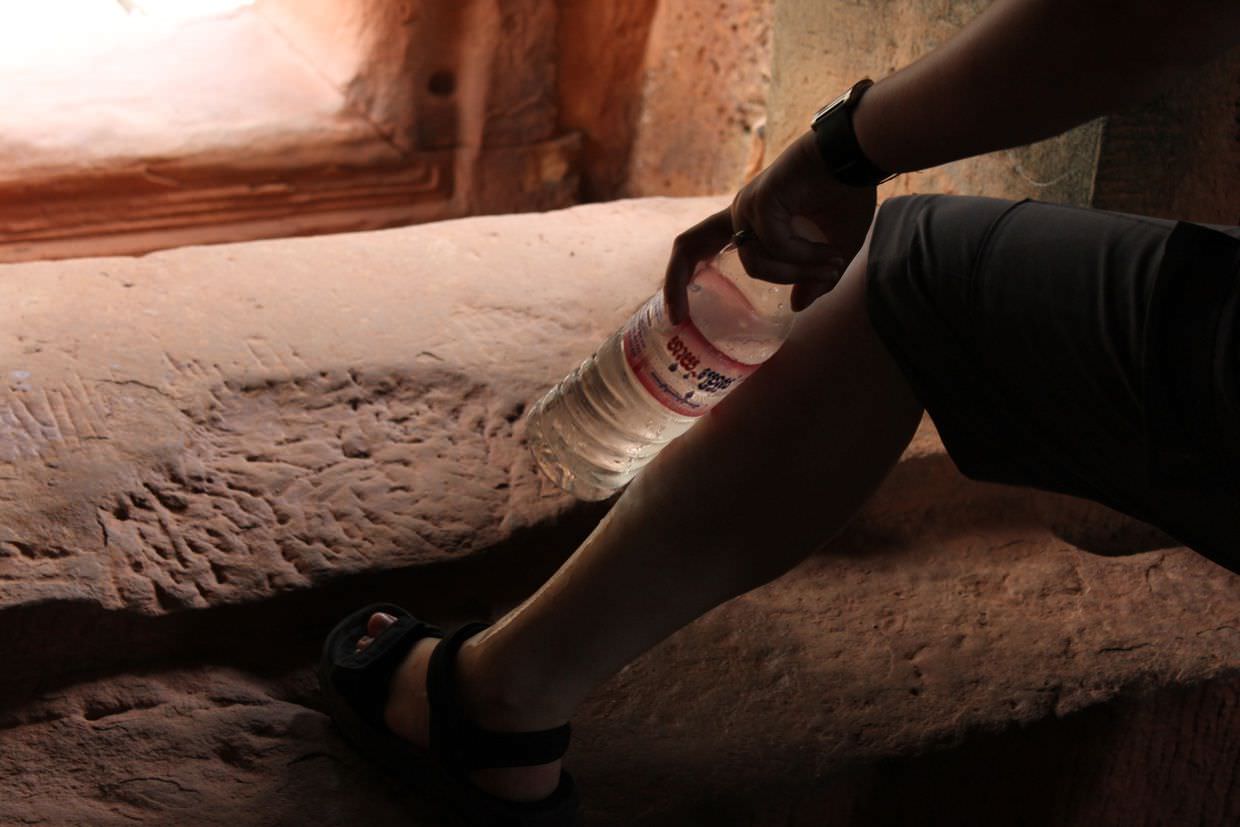
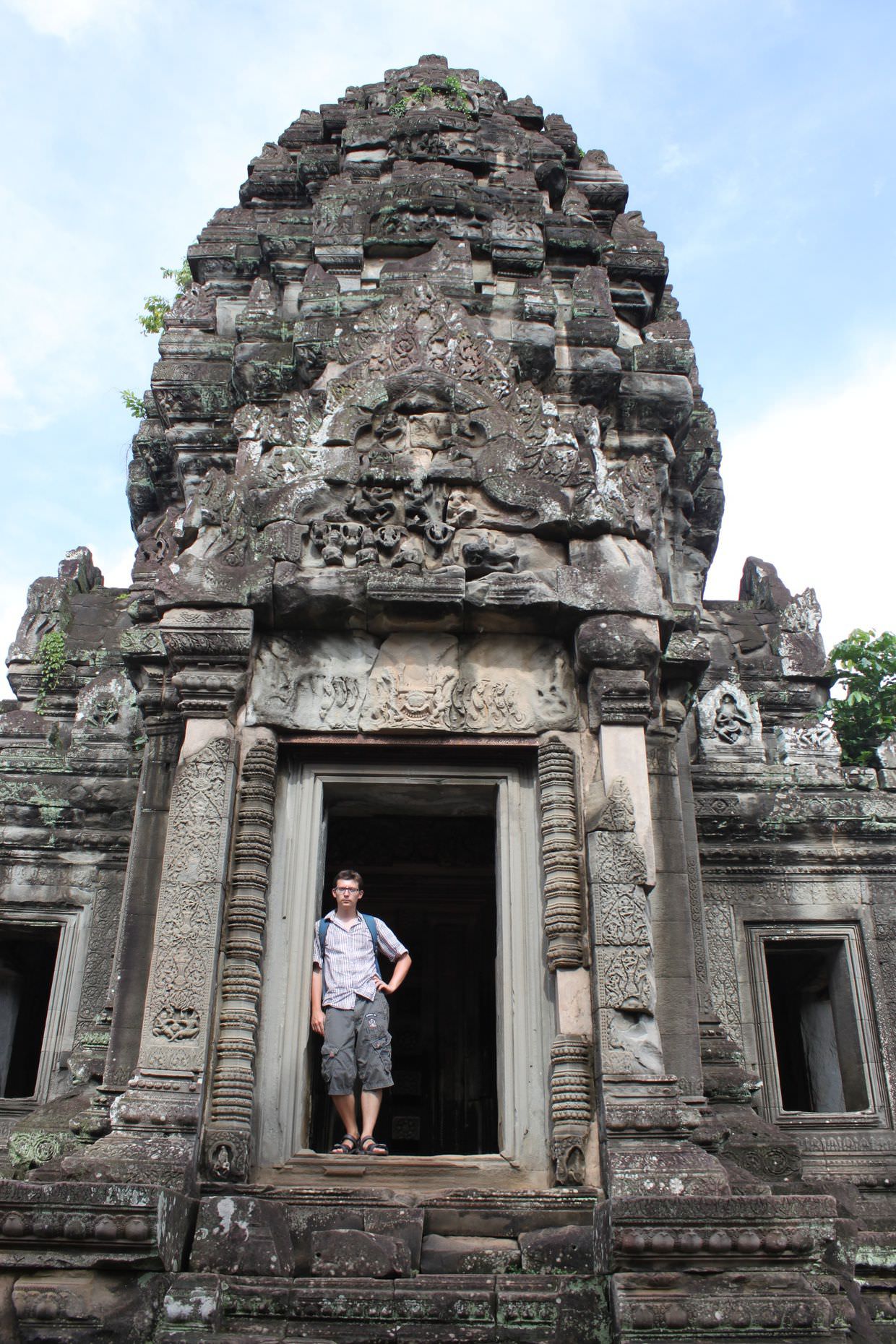
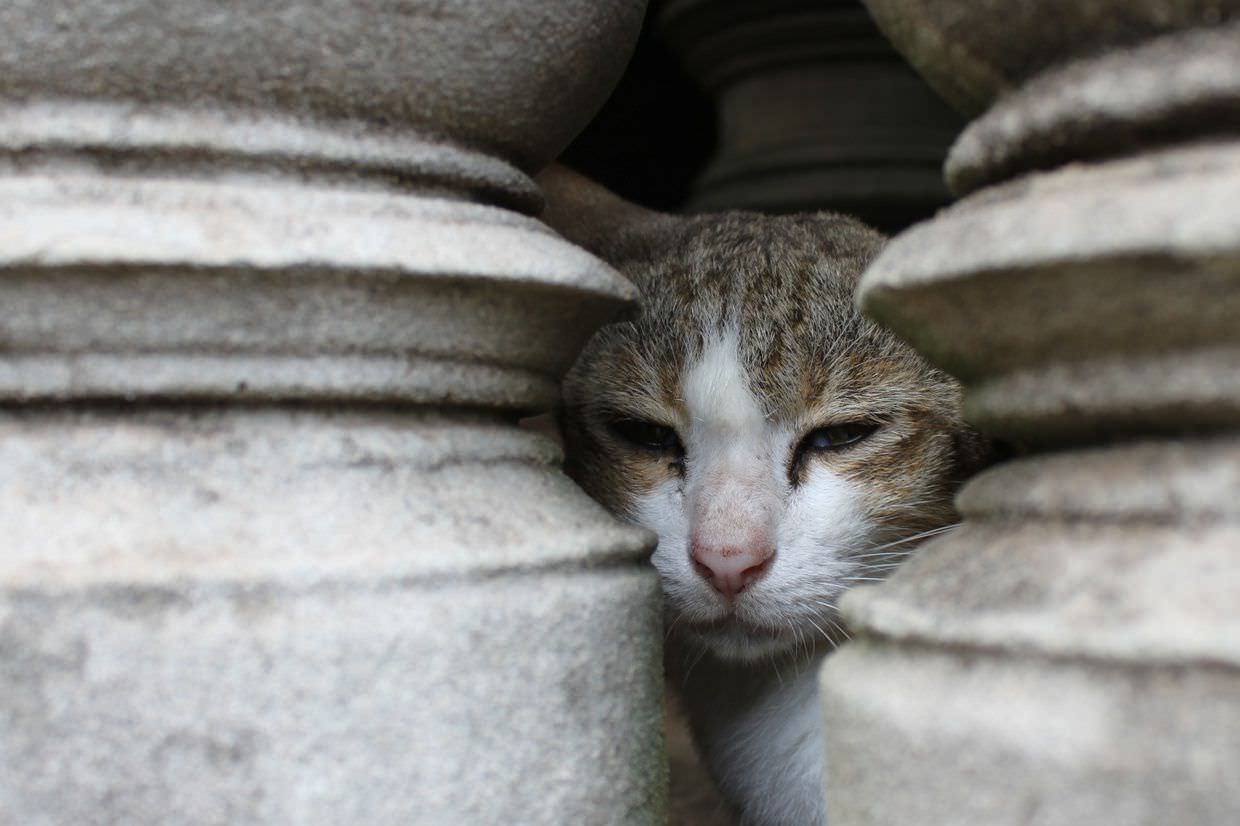
Pre Rup temple
Next on the temple checklist, and the last of all the temples we would see, Pre Rup, which means “turn the body”, funerals would’ve taken place here. Close to the Angkor park again, this temple mountain is one of the earliest, and noticeably made from small bricks, common for the era. The bricks are fascinating, layered up without any cementing agent, it’s a miracle they’re still standing 1200 years later.
For one last time we climb the steep steps of an ancient temple, no metal bars for support this time, Sam still braved the climb (it’s going down that’s hardest). From the top the forests spread out into the distance. There’s a mound, which Banteay Srei sits at the foot of, and we can just make out the towers of Angkor Wat. Like every night we’ve been here, there isn’t a spectacular sunset, though this would be a stunning place to watch one.
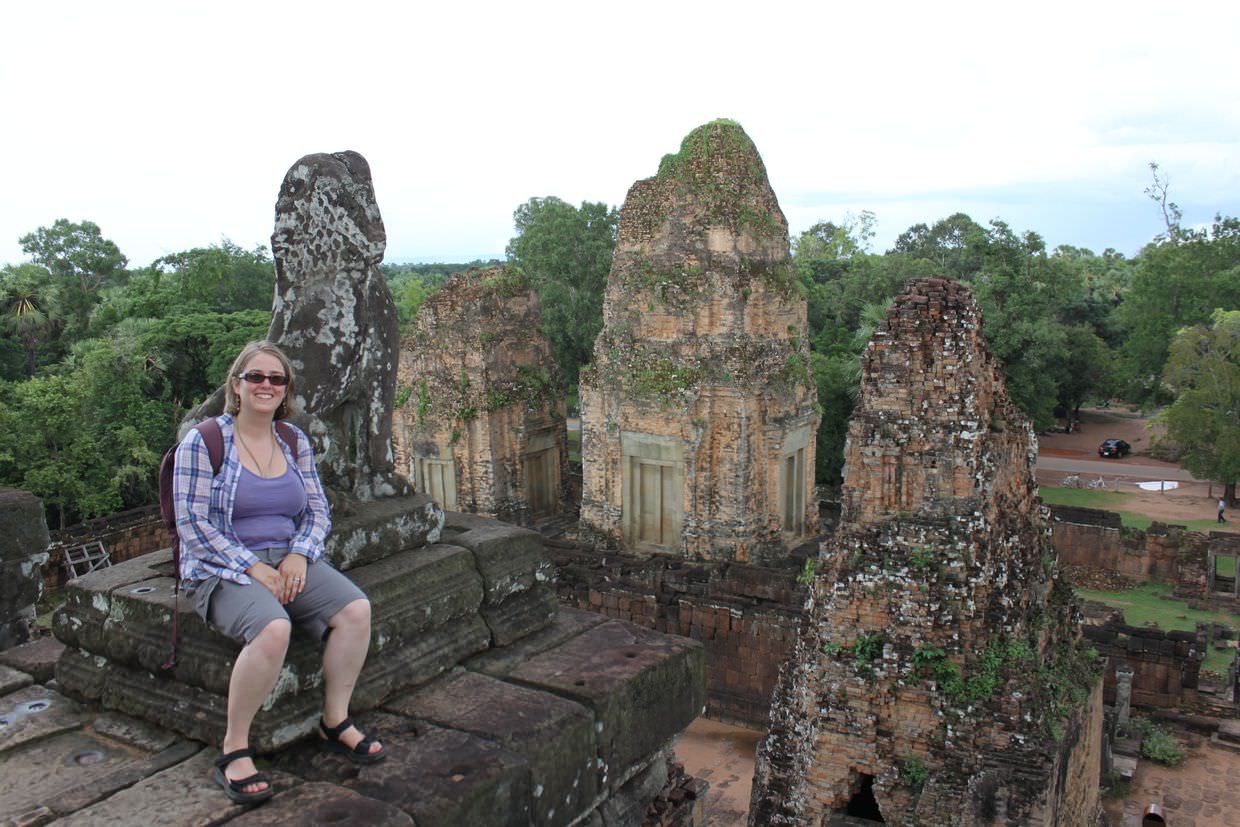
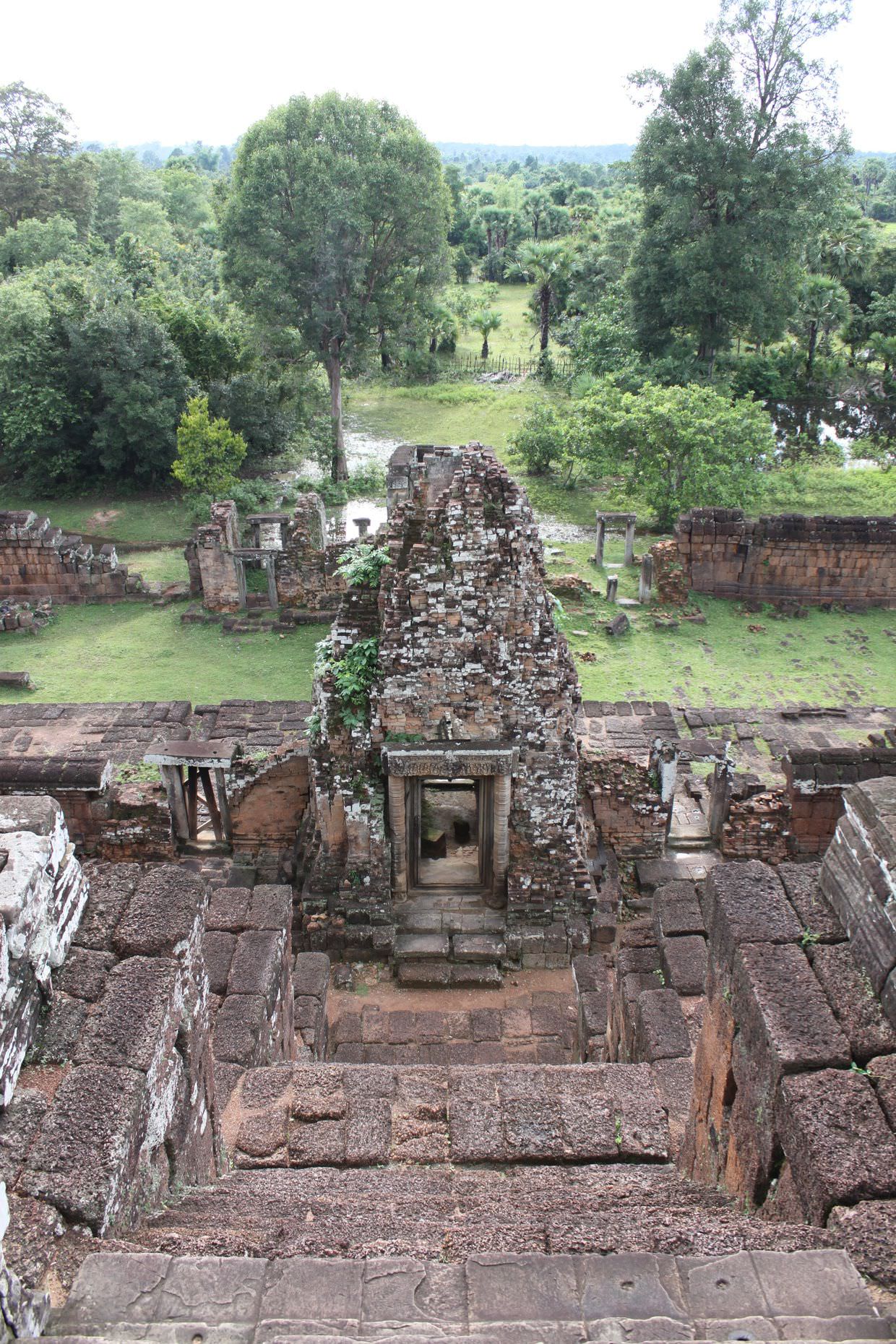
Thank you Vesna
Early evening now, and starving, we head homeward. Goodbye temples, you are all remarkable. I hope you can survive for another millennium. And goodbye Vesna, our wonderful conscientious tuk-tuk driver, he was fantastic, especially today.
We remained in the hotel for some final relaxing, a bit of reading, some red wine, some food, a free spa treatment and, with one last Cambodian bed time story, sleep. What a truly wonderful time we’ve had here.
